Techniques of Using and Caring for your Series 7 Brush
Series 7 Kolinsky Sable Brushes outshine their competitors, especially when used with professional quality paints. When cleaned and maintained properly, these brushes can give a lifetime of service – below you will find plenty of hints and tips to help you get the most out of your Series 7 brush!
If cared for correctly, Series 7 Kolinsky Sable Watercolour Brushes can offer a lifetime of service. The mediums you paint with and the way you use and clean your brushes will all affect the usable life of your brushes, but you will find that even as your brush wears in it will still out-perform a ‘solid-dressed’ sable. You may find that after certain techniques your brush needs re-shaping or re-pointing; this is a simple and quick process that will restore the crisp point and belly of your brush. You can find more tips on how to clean and maintain your brush to extend its workable life below.
Choosing a Watercolour Brush
If you are purchasing your first Series 7 brush we would advise going with a mid-sized brush, like a size 5. This size has a belly that is large enough to hold large quantities of colour while also providing a very fine point for detail. If you are looking to expand your collection, adding a size 3 and 8 will give you a good variation in sizes that will allow you to create varied marks and washes. A size 9 or 10 brush would be ideal when you require a larger brush for big washes. Two large brushes can come in useful when you paint wet in wet as you will not need to spend time washing your brush between each colour application. This will allow you to work faster and in a more controlled manner.
Pointing your Brush
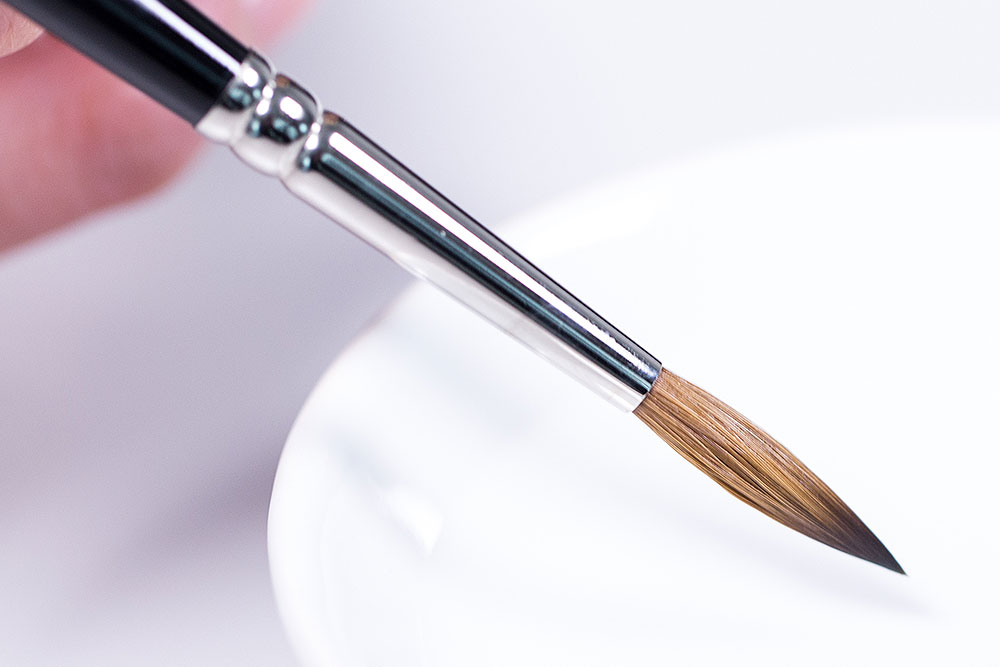
If you need to re-shape or re-point your brush this can easily be done either with or without colour. If you are shaping or pointing without colour you can use a jar of clean water. To do this dip your brush into the water and swirl to ensure it is thoroughly wet. Remove the brush and drain a little excess water by running the brush against the rim of the jar. Ensure you are away from any furniture or material and then swirl the brush and give it a hard flick of the wrist. If you are painting simply drain any excess colour onto your palette and gently twist the brush back to a point. With larger sized brushes you may need to drain quite a lot of colour from the base of the brush.
How long will my brush last?
A Series 7 brush can easily last a lifetime when cared for correctly. If in constant use their lifetime can be lessened, but you will find that even a worn Series 7 brushes can still out perform a solid-dressed sable brush!
Speed and Control of Painting
The large belly of the Series 7 range means applying washes is so much easier – on a full imperial sheet of paper a size 10 can easily paint a large sky wash using just one brush load of colour. These brushes are truly versatile; not only do they work excellently for large washes, their fine point can be used for small details and thin lines. You will be able to create a fine a line with a size 0 as you are able to with a size 10!
Using with Professional Quality Paint
A professional quality brush is best matched to a superior quality watercolour paint. Winsor & Newton’s reputation for creating the finest quality materials began with the introduction of their first moist watercolour paints in 1835. Over time these paints were reformulated according to their founding principles – to provide artists with a professional quality colour that offers a wide and balanced spectrum of pigments with the best possible permanence. Step forward 170 years and these improvements can be seen in today’s Winsor & Newton Professional Watercolour Paints. In the same way as the Series 7, these watercolour paints are made using only the finest materials. Custom made machinery and the knowledge of experienced chemists allows these raw materials to be formulated and processed into paints with astonishing brilliance, transparency and purity of colours. The range is constantly being improved upon as chemists make advancements in pigment technology as as production methods change – to ensure that these paints continue to meet the demands of today’s watercolourists.
By combining a Series 7 brush with Professional Watercolour Paints you will benefit from brilliant colour, excellent colour carrying capacity and precision and control of application.
Cleaning and Caring for your Series 7 Brush
A professional quality brush can be a lifetime investment, providing that it is cared for properly. With careful cleaning and storage you will find that you can greatly extend the usable life of your brush – even with daily use a Series 7 brush can offer many years of service. Follow these simple steps to help your brush last as long as possible:
- Ensure that your brushes are thoroughly cleaned at the end of each painting session.
- Do not leave your brushes to soak in water for extended periods.
- Never leave your brushes resting on their heads/bristles.
- After use, re-shape your brush back to a point. Avoid pointing the brush in your mouth.
Cleaning your brushes after each use is a handy habit to get into. Any dirt, pigment or water that dirties up the head of your brush can cause it to deteriorate over time. Following these simple steps will help you give your brushes a thorough clean:
- Wipe as much colour from your brush as you can using a lint-free cloth, then rinse under running water.
- Use cool water and a mild soap (or Winsor & Newton Brush Cleaner if you have used oil paint) to gently clean your brush. Carefully swirl the soapy brush in the palm of your hand to loosen any dirt. It is also advisable to wear protective gloves.
- Continue to rinse with water and clean with soap until the water runs clear. As Series 7 brushes are capable of holding large loads of colour it can take a few rinses before they are clean. It is always worth double checking the brush head where it meets the ferrule, as dirt and pigment can become trapped in the base.
- Some staining pigments may discolour your brush, but this should not effect its performance. Remove any excess water from the brush head and ferrule and lie on a flat surface until the brush is fully dry.
- It is important not to store the brush vertically unless completely dry as any water that leeches into the base and ferrule can cause the glue that holds the brush together to rot.

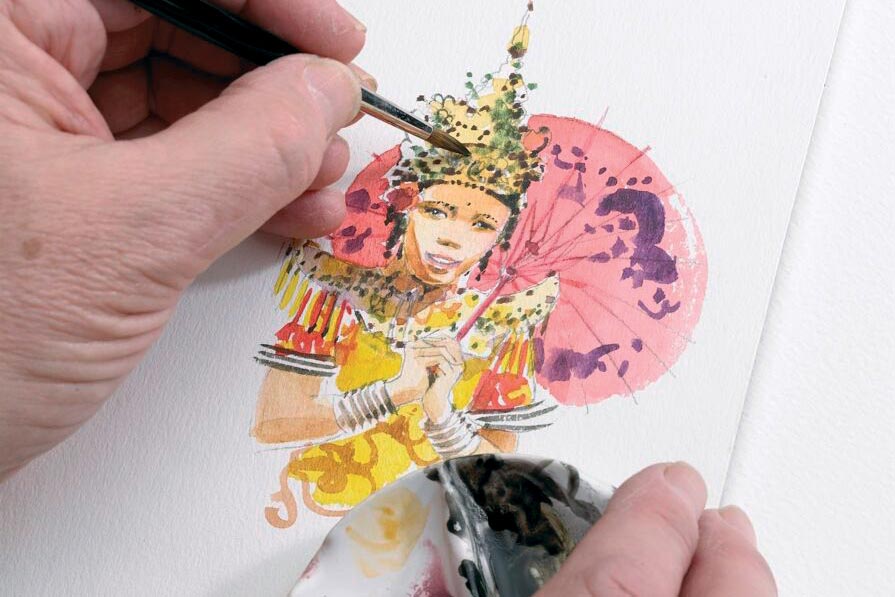
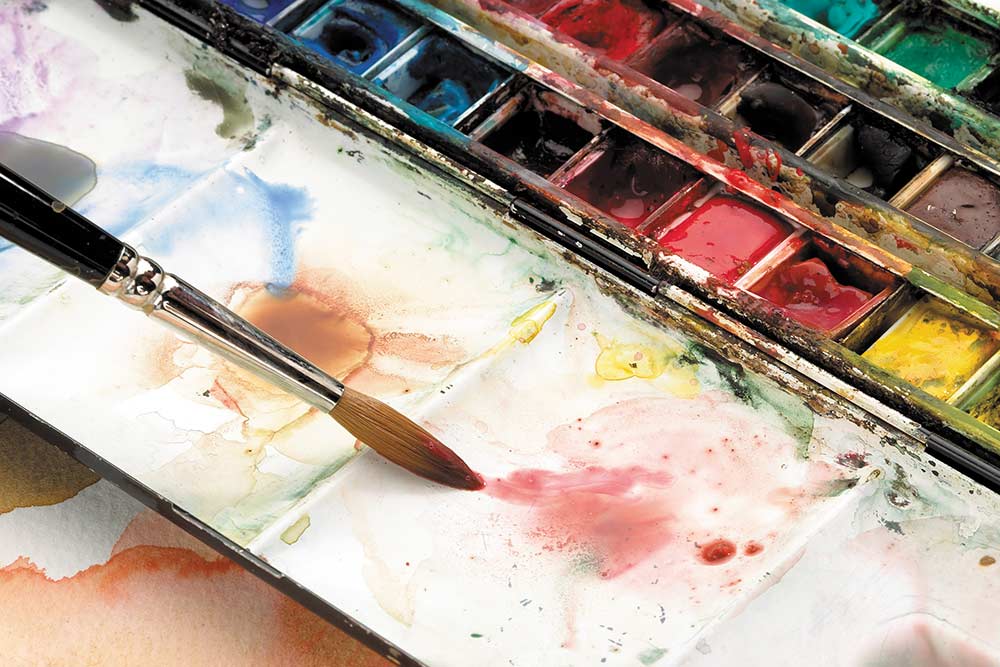
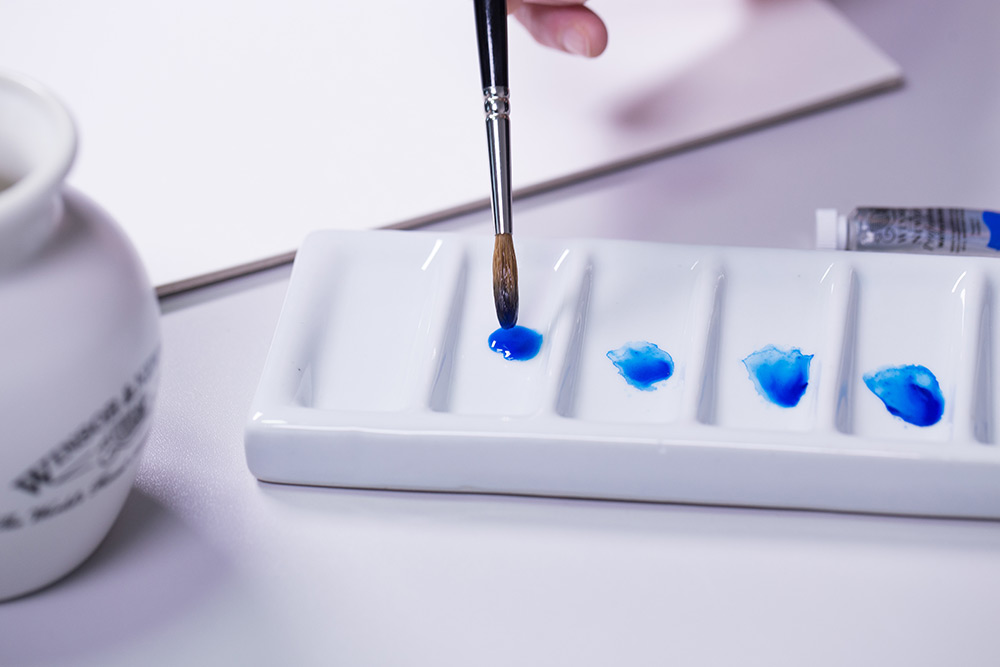
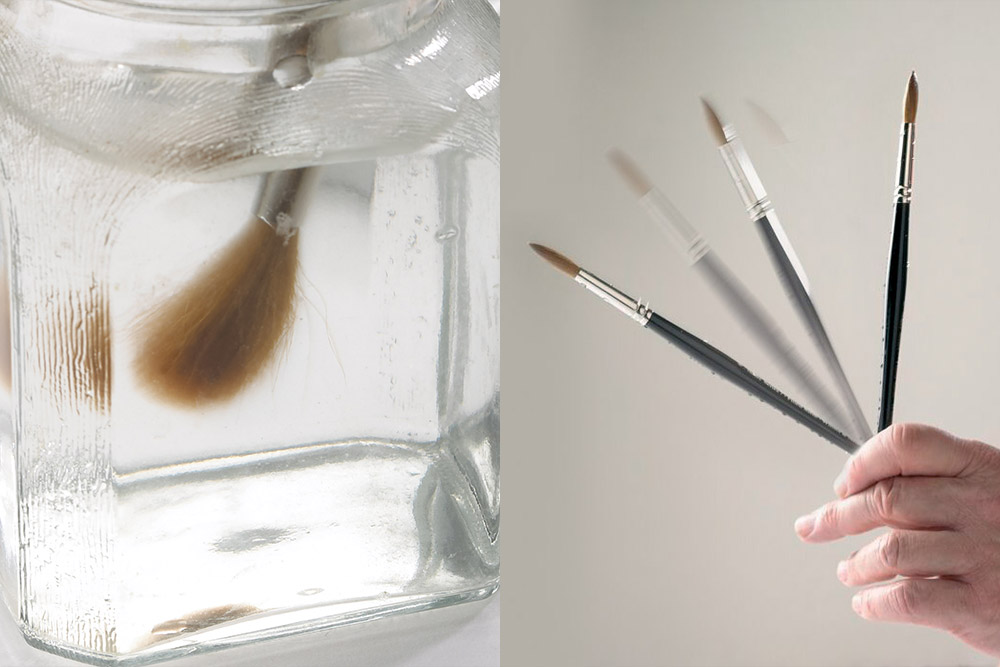
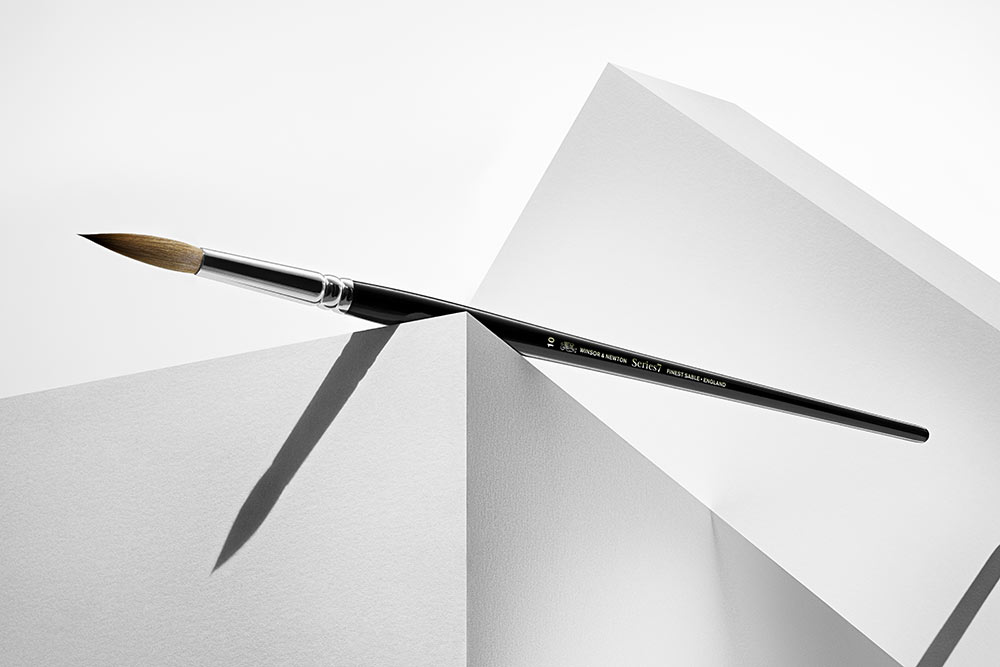

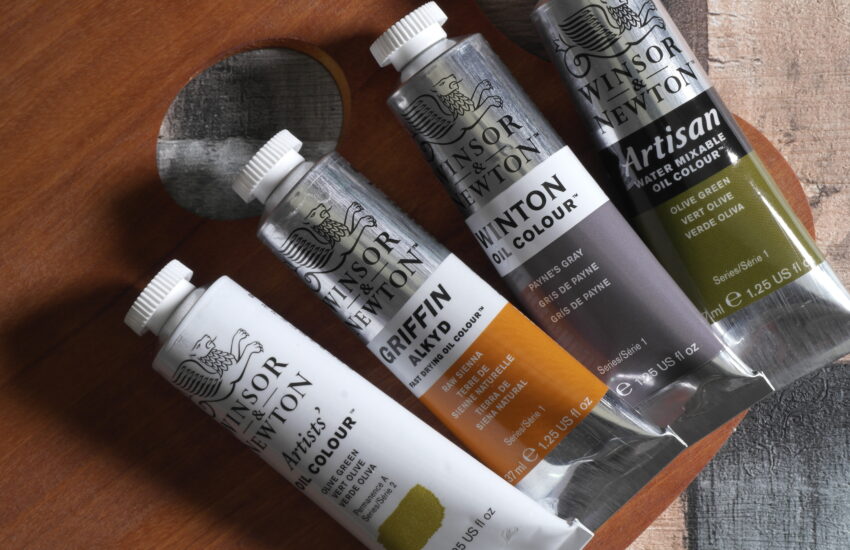

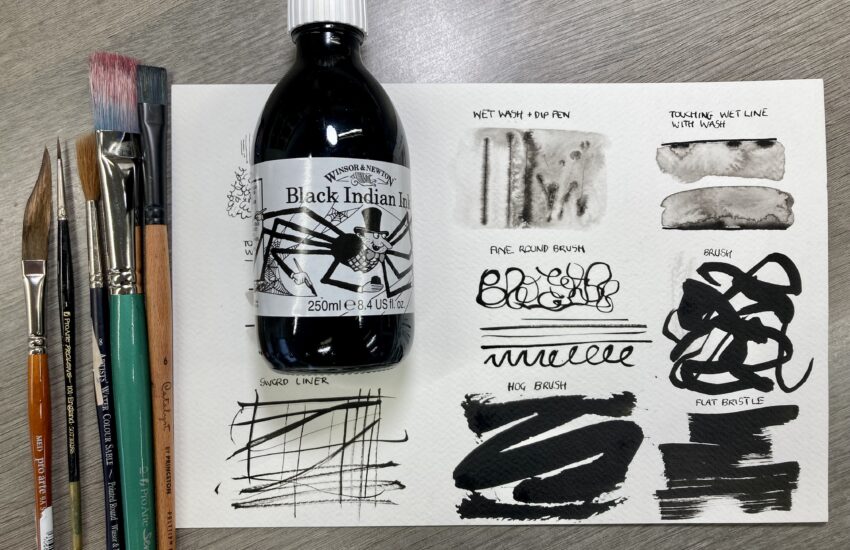
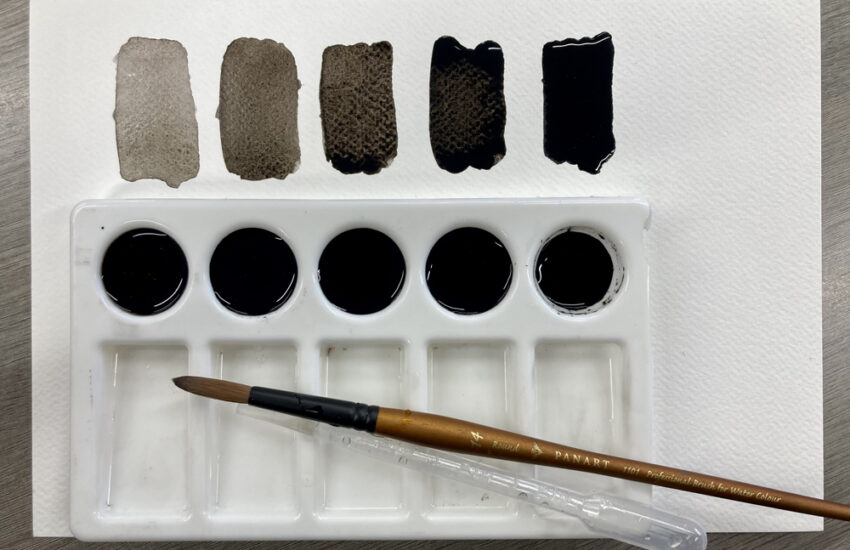


I recently bought a Series 7 size 4 mini. I’ve used it only a handful of times, but for some reason the hairs are all splayed everywhere and I have no point when the brush is wet or when it’s dry. I can’t even reshape it after I’ve wet it. What am I doing wrong?
Hi Sarah! Thank you for reaching out. I’m sorry to hear about the issues you’re experiencing with your Series 7 Miniature Brush. If you notice the hairs splaying dramatically, it might be due to leftover gum arabic or dried paint near the ferrule. When cleaning your brush, focus on clearing this area entirely of any residue. If the problem persists and you bought the brush from us, please reach out to our customer service team via email at [email protected], and we should be able to look into it further.
Thank you. I think a little video clip of the… “Ensure you are away from any furniture or material and then swirl the brush and give it a hard flick of the wrist. If you are painting simply drain any excess colour onto your palette and gently twist the brush back to a point. ”
… would be useful too.
I didn’t know that you should dry your brushes flat so I will be changing my habits.
When you start using a new brush is there any advice on removing the substance that makes them hard? Is it just to rinse until it goes soft & the bristles separate? Should you gently tease the hairs apart when wet? Etc. Etc.
This article is very useful to me, thank you for sharing it, I have learned a lot from it.